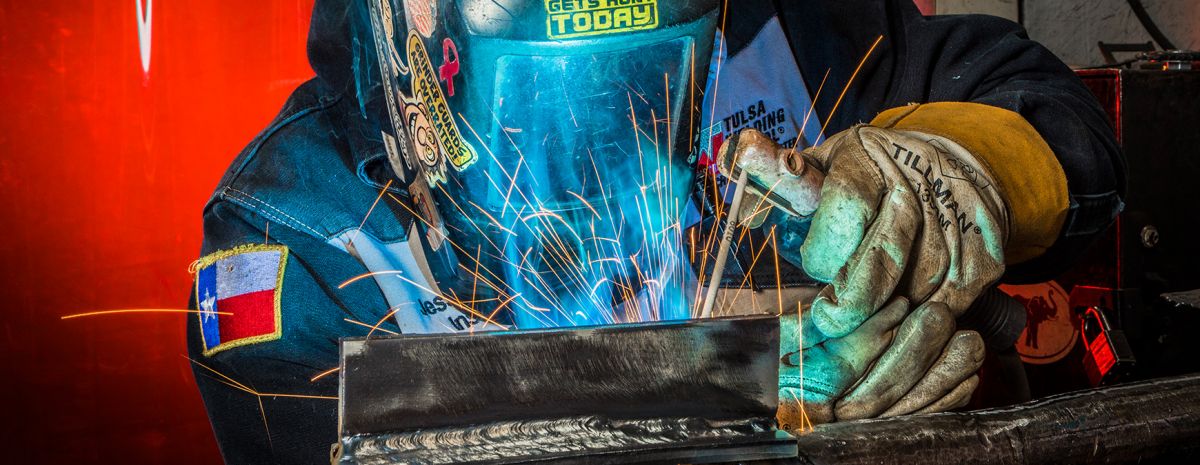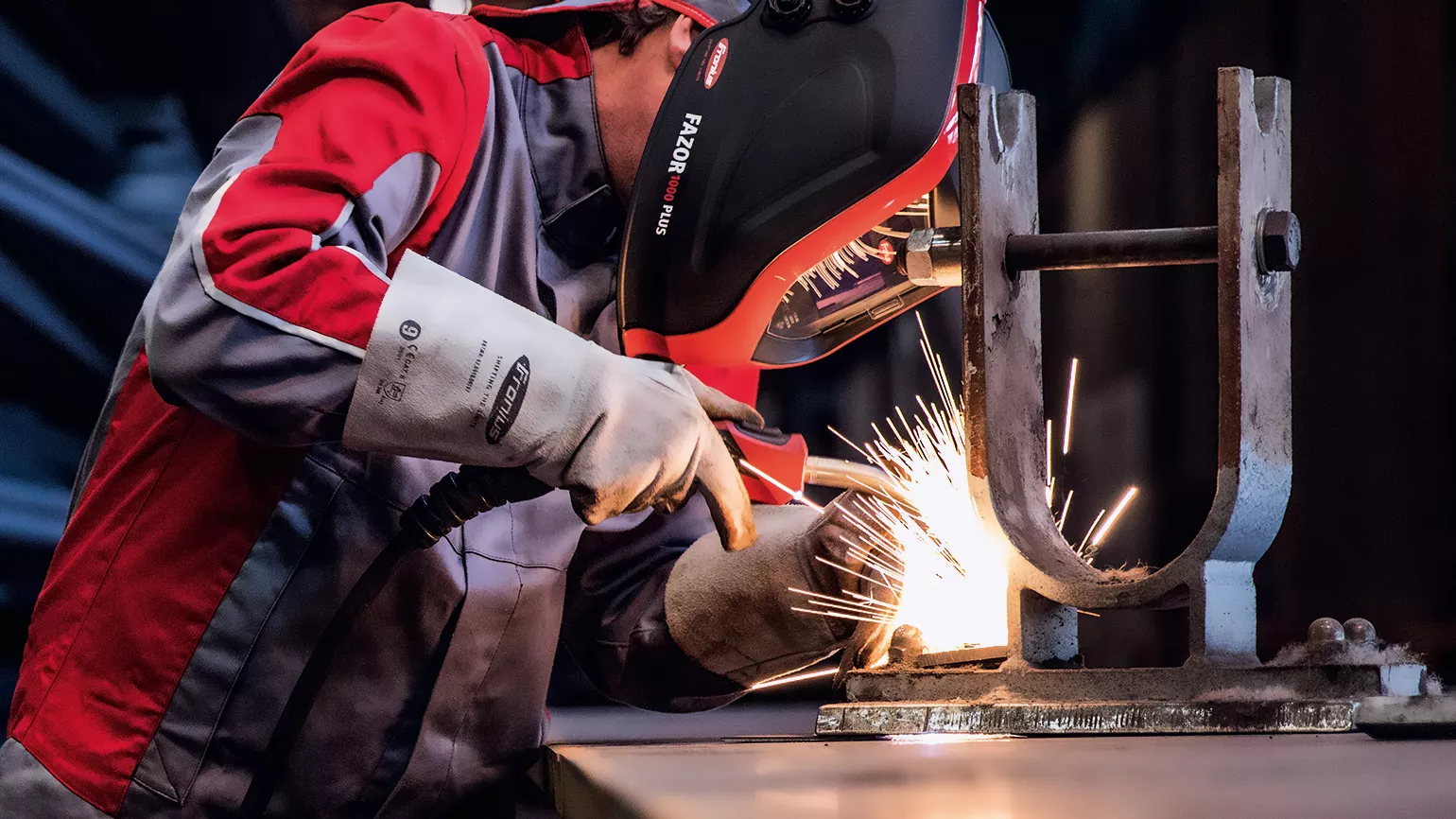Common Welding Repair Work Issues and Just How to Address Them Efficiently
Welding fixings usually experience a variety of concerns that can endanger the stability of the end product. Usual troubles include inadequate penetration, porosity, and misalignment, amongst others. Each problem provides one-of-a-kind difficulties that require details strategies for resolution. Recognizing these issues is vital for welders intending to improve their outcomes and abilities. This discussion will explore these typical welding repair concerns and effective approaches to address them.
Poor Penetration
Poor penetration takes place when the weld steel falls short to fully fuse with the base product, leading to weak joints and prospective structural failures. This issue commonly originates from not enough warm input, inaccurate electrode angle, or improper welding rate. Welders might experience insufficient infiltration because of a miscalculation of the needed parameters for a particular product density or kind. Additionally, contamination on the base material's surface area can impede reliable bonding, intensifying the issue. To deal with inadequate penetration, welders ought to assure proper settings on their devices and maintain a clean job surface. Routine examination of welds is suggested to recognize any type of shortages early, enabling timely improvements and the avoidance of jeopardized structural integrity in welded settings up.
Porosity
Porosity is a common problem in welded joints that manifests as little gas bubbles trapped within the weld steel. This defect can jeopardize the honesty of the weld, resulting in minimized stamina and prospective failure under anxiety. Montana Mobile Welding and Repair Belgrade. Porosity generally arises from contamination, wetness, or incorrect welding methods, which enable gases to run away into the liquified weld swimming pool. To resolve porosity, welders ought to assure appropriate surface preparation, maintain a clean workplace, and use appropriate welding criteria. Additionally, choosing the appropriate filler product and protecting gas can minimize gas entrapment. Normal assessment and screening of welds can aid recognize porosity early, guaranteeing prompt rehabilitative actions are taken, thus protecting the quality and integrity of the bonded framework
Imbalance
Misalignment in welding can emerge from various variables, including improper configuration and thermal development. Recognizing the origin is necessary for efficient resolution. Several adjustment techniques are available to realign parts and guarantee structural stability.
Causes of Imbalance
Welding imbalance commonly comes from a selection of underlying problems that can compromise structural stability. One main cause is inappropriate fit-up of parts prior to welding, which can bring about gaps and irregular surfaces. Variants in thermal development throughout the welding process can likewise result in distortion, especially if the materials being joined have various coefficients of development. In addition, inadequate clamping and fixturing might stop working to hold components firmly in location, resulting in movement during welding. Badly kept tools, consisting of welding equipments and devices, may introduce disparities in the weld bead, further adding to misalignment. Lastly, operator mistake, originating from not enough training or experience, can also play a significant role in producing misaligned welds.
Correction Methods Offered
Dealing with misalignment effectively requires a combination of corrective methods tailored to the specific issues at hand. One usual technique is the use of fixtures or jigs to hold elements in the right setting during welding, making sure consistent placement. Additionally, preheating the products can help in reducing distortion and enhance fit-up. For substantial imbalance, mechanical realignment techniques, such as using hydraulic jacks or clamps, can be employed to remedy the position before welding. Post-weld warm treatment might also be essential to ease stresses triggered by imbalance. Finally, careful examination and change during the arrangement phase can stop imbalance concerns from becoming considerable troubles, promoting a smoother welding process and boosting overall structural integrity.
Distortion
Distortion is a common challenge in welding that can occur from various factors, consisting of uneven home heating and cooling. Understanding the sources of distortion is vital for applying efficient avoidance methods. Resolving this issue not just enhances architectural integrity yet likewise boosts the overall top quality of the weld.
Root causes of Distortion
When subjected to the extreme warm of welding, products usually go through adjustments that can result in distortion. This sensation largely arises from thermal expansion and contraction throughout the welding process. As the weld area warms up, the product expands; upon air conditioning, it contracts, which can create interior stress and anxieties. On top of that, uneven heating throughout a work surface can intensify these stress and anxieties, leading to warping or bending. The kind of product also plays a considerable role; metals with varying thermal conductivity and coefficients of development may respond in different ways, bring about unpredictable distortions. In addition, bad joint design and poor fixturing can add to imbalance throughout welding, raising the probability of distortion. Comprehending these reasons is necessary for effective welding repair work and prevention methods.
Avoidance Techniques
Efficient avoidance methods for distortion during welding emphasis on managing warm input and making certain correct joint layout. Keeping a constant heat input aids to minimize thermal expansion and contraction, which can cause distortion. Using strategies such as pre-heating the workpiece can also decrease the temperature level gradient, advertising uniform heating. Furthermore, selecting suitable joint layouts, such as T-joints or lap joints, can improve security and minimize anxiety focus. Carrying out appropriate fixturing to protect the workpieces in position even more aids in keeping positioning throughout the welding procedure. Staggered welding sequences can disperse warmth extra equally, stopping local distortion. By using these strategies, welders can greatly lower the probability of distortion and enhance the overall quality of their welds.
Fracturing
Fracturing is an usual problem encountered in welding repair work, frequently arising from different elements such as improper air conditioning prices, material option, or poor joint prep work. The incident of splits can substantially compromise the stability of the weld, resulting in potential failings during operation. To resolve this concern, welders should initially analyze the origin, making sure that materials work and properly picked for the details application. Furthermore, controlling the cooling price throughout the welding procedure is vital; rapid air conditioning can induce stress and anxiety and result in splitting. Correct joint design and preparation likewise add to reducing the threat. Implementing these approaches can improve weld high quality and toughness, inevitably lowering the chance of cracking in completed weldments.

Incomplete Fusion
A considerable concern in welding repair work is incomplete fusion, which occurs when the weld metal does not sufficiently bond with the base product or previous weld passes - Montana Mobile Welding and Repair Belgrade Fabrication. This issue can bring about weak points in the joint, potentially compromising the stability of the welded structure. Variables adding to incomplete fusion include not enough warmth input, improper welding method, and contamination of the surface areas being signed up with. To address this problem efficiently, welders should ensure correct pre-weld cleansing and surface area prep work, along with adjust their welding specifications to accomplish adequate infiltration and combination. Routine assessment during the welding procedure can additionally assist recognize incomplete fusion early, permitting prompt restorative measures to enhance the general top quality of the weld
Overheating
While welding repair services can enhance architectural honesty, overheating offers a substantial obstacle that can cause product deterioration. Too much warm during welding can modify the mechanical properties of steels, leading to lowered strength, raised brittleness, and bending. This phenomenon is specifically important in high-stress applications where architectural reliability is critical. Recognizing getting too hot can entail aesthetic evaluations for staining or distortion, in addition to monitoring temperature level during the welding process. To reduce the dangers related to overheating, welders should use proper strategies, such as controlling warm input, readjusting travel rate, and utilizing appropriate filler products. Furthermore, implementing pre- and post-weld warm treatments can assist recover material homes and improve the general high quality of the repair work, guaranteeing long-term performance and safety and security.
Frequently Asked Questions
What Are the Usual Indicators of a Welding Defect?

Exactly How Can I Check My Welds for Quality?
To test welds for quality, one can make use of aesthetic inspections, ultrasonic screening, and radiographic techniques. Each technique guarantees structural stability, identifies defects, and verifies adherence to specified requirements, inevitably boosting the dependability of the bonded joints.
What Safety and security Safety Measures Should I Take While Welding?
When welding, one ought to prioritize safety by wearing appropriate personal safety equipment, making sure correct ventilation, protecting click here flammable products away, preserving a tidy work area, and being aware of surroundings to avoid mishaps and injuries.
Can I Repair a Weld Without Remodeling the Entire Joint?
Fixing a weld without remodeling the entire joint is possible, depending upon the damage (Belgrade Fabrication). Strategies such as grinding, including filler product, or utilizing a welding process can properly address specific flaws while protecting the bordering framework
What Devices Are Important for Reliable Welding Fixes?
Necessary devices for reliable welding repair services include a welding device, cable brush, grinder, safety equipment, clamps, and filler products. Each tool plays a vital function in ensuring high quality and security throughout the repair procedure. Porosity commonly develops from contamination, moisture, or improper welding methods, which allow gases to run away into the molten weld swimming pool. Inadequately conserved devices, including welding equipments and tools, might introduce incongruities in the weld grain, further adding to imbalance. When subjected to the intense warm of welding, products frequently undergo adjustments that can lead to distortion. Breaking is an usual problem experienced in welding repairs, usually resulting from various elements such as improper air conditioning prices, product selection, or poor joint preparation. A significant concern in welding fixings is incomplete blend, which takes place when the weld metal does not sufficiently bond with the base product or previous weld passes.